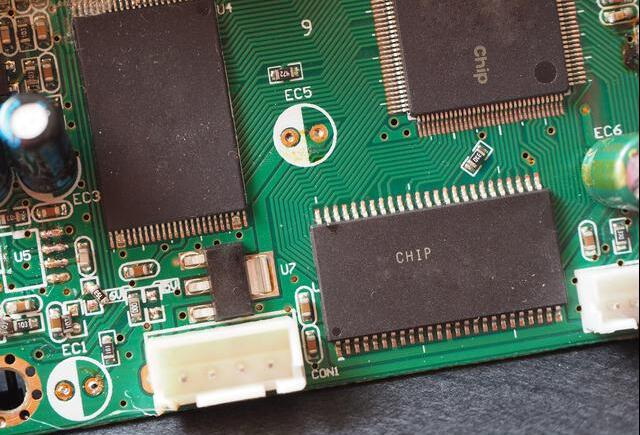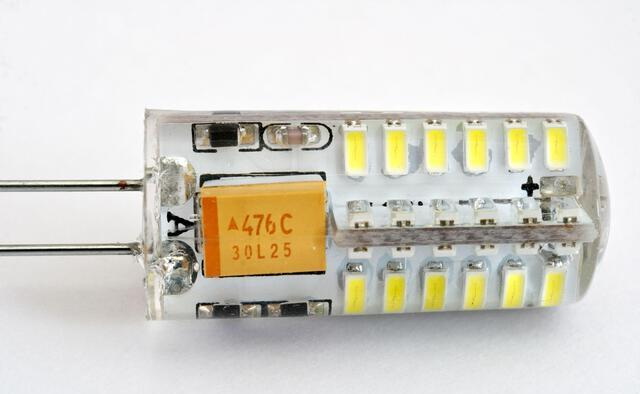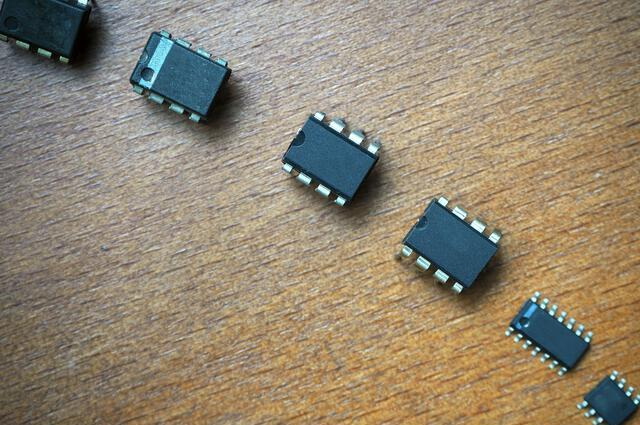Content Menu
● Compatibility with Component Types
● Feeding Mechanism
● Input Capacity
● Ease of Use and Maintenance
● Reliability and Durability
● Advanced Features
● Cost Efficiency
● Integration with Existing Systems
● Size and Weight Considerations
● Safety Features
● Conclusion
● FAQ
>> 1. What is an SMT feeder?
>> 2. How do I choose the right SMT feeder?
>> 3. What are common issues faced with SMT feeders?
>> 4. Can SMT feeders handle different component sizes?
>> 5. How often should I maintain my SMT feeder?
● Citations:
In the rapidly evolving world of electronics manufacturing, the Surface Mount Technology (SMT) feeder plays a critical role in ensuring efficiency and precision during the assembly process. A reel SMT feeder is specifically designed to handle components packaged on reels, delivering them accurately to pick-and-place machines. Selecting the right SMT feeder can significantly impact production speed, accuracy, and overall operational costs. This article explores the top features to consider when choosing a reel SMT feeder.

Compatibility with Component Types
One of the foremost considerations when selecting a reel SMT feeder is its compatibility with various component types. Different components come in various shapes, sizes, and packaging formats, including:
- Tape Feeders: Ideal for standard components mounted on adhesive tape.
- Stick Feeders: Suitable for non-standard or oddly shaped components.
- Tray Feeders: Designed for larger or irregularly shaped components.
- Tube Feeders: Best for long, delicate components like LEDs.
Understanding the types of components your production line handles will guide you in selecting a feeder that meets your needs effectively.
Feeding Mechanism
The feeding mechanism of an SMT feeder is crucial for ensuring smooth operation and minimizing downtime. Key aspects include:
- High-Speed Operation: Look for feeders that offer high-speed component feed rates to keep up with the demands of modern production lines. For instance, some feeders can achieve loading times as fast as five seconds.
- Automatic Loading Features: Advanced feeders come equipped with automatic loading functions that simplify the process of feeding tape-mounted parts, reducing operator workload and minimizing errors.
- Error Prevention Mechanisms: Features such as part insertion error preventers can help reduce misfeeds and ensure components are delivered accurately to the pick-and-place machine.
Input Capacity
The input capacity of an SMT feeder determines how many reels it can accommodate simultaneously. This feature is vital for maintaining a steady flow of components during production. Considerations include:
- Number of Feeder Slots: More slots allow for greater flexibility in handling multiple component types without frequent changeovers.
- Size Compatibility: Ensure that the feeder can handle various reel sizes, typically ranging from 8mm to larger widths depending on component requirements.
Ease of Use and Maintenance
A user-friendly design can significantly enhance operational efficiency. Key features to look for include:
- Intuitive Controls: Simple and clear controls make it easier for operators to load and configure feeders quickly.
- Maintenance Accessibility: Select feeders designed for easy maintenance, allowing operators to perform routine checks and repairs without extensive downtime.
- Compact Design: A lightweight and compact feeder design can reduce the physical strain on operators while optimizing space on the production floor.
Reliability and Durability
Reliability is paramount in any manufacturing environment. An SMT feeder should be robust enough to withstand continuous operation without frequent breakdowns. Consider:
- Construction Quality: Look for feeders made from high-quality materials that can endure wear and tear over time.
- Performance Consistency: Choose feeders known for their consistent performance under varying operational conditions, ensuring minimal disruptions during production.
Advanced Features
Modern SMT feeders often come equipped with advanced features that enhance their functionality:
- Real-Time Monitoring: Some feeders offer real-time monitoring capabilities, allowing operators to track performance metrics and identify issues before they lead to production delays.
- Integration with Smart Systems: Compatibility with Industry 4.0 technologies enables seamless integration into smart manufacturing environments, enhancing overall efficiency.
- Customizable Settings: The ability to adjust settings based on specific component needs can improve placement accuracy and reduce waste.
Cost Efficiency
While investing in high-quality SMT feeders may require a higher initial expenditure, consider their long-term cost efficiency:
- Reduced Downtime: Reliable feeders minimize machine stoppages due to component supply issues, leading to increased productivity.
- Lower Maintenance Costs: Durable feeders that require less frequent repairs or replacements contribute to overall cost savings over time.
- Improved Component Utilization: Efficient feeders reduce material waste by ensuring accurate placement and minimizing misfeeds.

Integration with Existing Systems
To maximize productivity, an SMT feeder must integrate seamlessly with existing assembly line systems:
- Compatibility with Pick-and-Place Machines: Ensure that the feeder is compatible with your specific pick-and-place machines to facilitate smooth operation.
- Software Integration Capabilities: Modern feeders often come with software that allows real-time data tracking and analysis, which helps in optimizing production processes based on performance metrics.
Size and Weight Considerations
The physical dimensions and weight of an SMT feeder can influence its placement within your production line:
- Space Optimization: Compact designs help save valuable floor space in manufacturing facilities while ensuring efficient operation.
- Weight Distribution: A well-balanced feeder design minimizes vibration during operation, contributing to more accurate component placement.
Safety Features
Safety should not be overlooked when selecting an SMT feeder:
- Emergency Stop Functions: Ensure that the feeder has easily accessible emergency stop buttons to allow operators to halt operations quickly if needed.
- Protective Covers or Shields: Features such as protective covers can prevent accidental contact with moving parts during operation, enhancing workplace safety.
Conclusion
Choosing the right reel SMT feeder involves careful consideration of various factors that impact operational efficiency and production quality. By focusing on compatibility with component types, feeding mechanisms, input capacity, ease of use, reliability, advanced features, cost efficiency, integration with existing systems, size considerations, and safety features, manufacturers can optimize their assembly processes and achieve significant improvements in productivity.
Investing in a high-quality SMT feeder not only enhances the performance of pick-and-place machines but also contributes to a more streamlined manufacturing operation overall. As technology continues to evolve in the electronics manufacturing sector, staying informed about advancements in SMT feeders will empower manufacturers to make strategic decisions that enhance their competitive advantage in the market.

FAQ
1. What is an SMT feeder?
An SMT feeder is an automated device used in surface mount technology that supplies individual electronic components from their packaging (like reels or trays) to a pick-and-place machine for assembly onto printed circuit boards (PCBs).
2. How do I choose the right SMT feeder?
Choosing the right SMT feeder involves considering factors such as compatibility with component types, feeding mechanisms, input capacity, ease of use, reliability, advanced features, and overall cost efficiency.
3. What are common issues faced with SMT feeders?
Common issues include misfeeds due to improper setup or mechanical failures, communication problems between the feeder and placement machine, and power supply issues affecting operation.
4. Can SMT feeders handle different component sizes?
Yes, many modern SMT feeders are designed to accommodate a range of component sizes by using adjustable settings or interchangeable parts tailored for specific sizes.
5. How often should I maintain my SMT feeder?
Regular maintenance is recommended based on usage frequency; however, conducting checks before each production run can help identify potential issues early and ensure optimal performance.
Citations:
[1] https://global.yamaha-motor.com/business/smt/mounter/alf/feature/
[2] https://global.yamaha-motor.com/business/smt/mounter/alf/spec/
[3] https://www.hayawin.com/products/smt-feeder.html
[4] https://www.smtmanufacturing.net/smt-feeder-all-you-need-to-know/
[5] https://www.hayawin.com/news-smt-machine-types-and-features-of-excellent-smt-machines.html
[6] https://pickandplace-neoden.en.made-in-china.com/product/ZKMQIlaBamUA/China-Neoden4-SMT-Machine-with-SMT-Reel-Feeder-48-IC-Tray-Feeder-45.html
[7] https://www.circuitnet.com/experts/39998.html
[8] https://www.neodensmt.com/news/how-to-choose-smt-feeder-44883121.html
[9] https://www.zjyingxing.com/info/what-is-the-function-of-the-feeder-in-the-smt-83821364.html
[10] https://www.juki.co.jp/smt/en/products/ef8s/




















